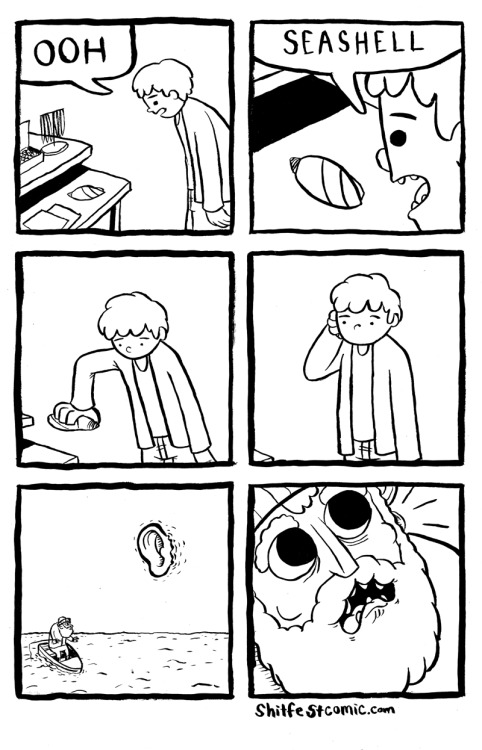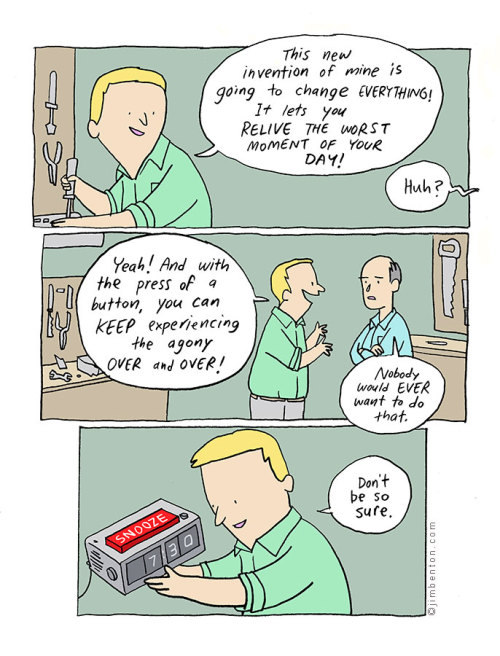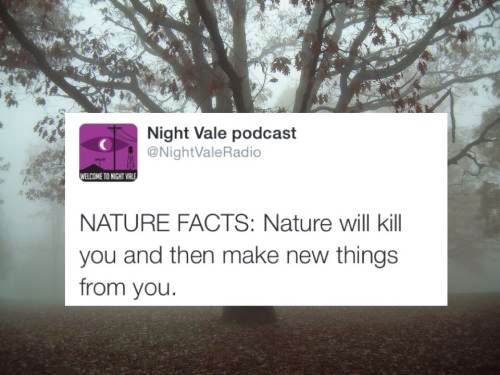This is a typical stream morphology for mid-sized to small streams with a moderate to low gradient: relatively slow-moving pools separated by small "steps" of riffles. I've always assumed the riffles help keep dissolved oxygen levels close to a maximum, but during summer months, the main variable controlling that is water temperature, not aeration.
Photo unmodified. August 30, 2012. FlashEarth Location (completely guessing on this one, but along correct drainage).
Miscellaneous thoughts on politics, people, math, science and other cool (if sometimes frustrating) stuff from somewhere near my favorite coffee shop.
Saturday, January 24, 2015
Geo 1095: January 23, Day 753: Rock Fall
A week to two weeks ago, when I was discussing the large waterfall upstream from this spot, I emphasized the importance of the sedimentary beds between flows of Columbia River Basalt. Those beds weather and erode out faster than the basalt, undercutting it. This leaves suspended slabs of rock hanging, unsupported from below. From time to time, large blocks break off, which helps to maintain a vertical drop- that can be seen particularly well in this post. The same process works along the cliffs surrounding this portion of the canyon, though without the influence of a major stream, at a slower pace. Nevertheless, all along this reach of the stream, hikers often see large boulders on the valley floor. These have broken off the precipices surrounding the gorge and rolled to the bottom. I doubt even the largest trees would slow down blocks of this size. However, that vegetative cover couldn't have developed very quickly. I suspect these required on the order of decades to develop that thick moss and fern pelt. So it's not very frequent, and not something to worry about. But one definitely wouldn't want to build any kind of permanent structure down here.
Photo unmodified. August 30, 2012. FlashEarth Location (approximate).
Photo unmodified. August 30, 2012. FlashEarth Location (approximate).
Thursday, January 22, 2015
Geo 1095: January 22, Day 752: Unrooted Roots
This is a big-leaf maple down the creek a ways (maybe a mile or so?) below North Falls. Hardwoods like this don't add girth, generally speaking, as quickly as similar-aged conifers, so I'd guess this tree is in the neighborhood of a century old or so. When it was a mere sapling, it sent roots out in many directions to find water and the nutrients it needs. One of those became well established near what I'd presume was the then current soil level. In the past 100 years or so, soil has been removed by some combination of erosion, creep, and perhaps other minor mass transport mechanisms- more substantial earth movement would have tipped the tree more, or knocked it over completely. We rarely see major changes to the earth's surface outside of catastrophes and disasters, but here's a subtle hint at how it changes in tiny annual increments. Over a century, those slight changes add up.
Photo unmodified. August 30, 2012. FlashEarth Location (approximate).
Photo unmodified. August 30, 2012. FlashEarth Location (approximate).
Wednesday, January 21, 2015
Geo 1095: January 21, Day 751: A Landscape in a Creek Bed
Here we have another exercise like this one from the tail end of last year. "The point is, if all you could see was the sediment in the creek- no
horizon, no vegetation, no location- you could still infer much of the
environmental setting, just from the nature and arrangement of the
sediment itself." We do see some vegetation, and the shadows from the bridge, constructed of 4x4s and 2x4s, give a convenient scale. But by and large, all we can see is the stream sediment.What can we say about the landscape around here? The stream itself is notably absent, which suggests a small drainage area. The sediment visible on the surface is quite angular, which means very little transport, also suggesting a limited drainage area. It's also quite coarse- there's little to no sand or silt visible here- which indicates heavy flow (though there's probably fine sediment buried down under the coarser material) and/or a very steep drainage. But right now, there's no visible flow at all (again, there's probably some transport as groundwater down in that pile). What's up with that? What this suggests to me is that most transport occurs in short-lived storm events, with the flow becoming unable to transport much of anything as the rain subsides. The lush vegetation in the upper corners says there's soil developed here, so why are fines missing in the sediment load? That fraction is probably locked down by plant roots. (Addendum: And as Anne points out in the comments, the finer sediments that are carried through here don't stop here; they just keep gong downstream.) You can also see that all the rock appears to be of the same type.
So that's what a geologist can reasonably infer from looking at the photo. The broader picture? We are, in fact, looking up a small side drainage off the main canyon below North Falls. It's a small catchment area, prone to heavy winter rains, as warm marine air begins its climb over the Cascades, wringing much of the moisture out of the air. The valley overall is quite steep, coming off the same ledges of Columbia River Basalt as we've seen in previous photos of North Falls, which is why all the rock is basalt. Our summers here are quite arid, and by late August, most streams that aren't spring fed are very low or dry. Everything I've noted in this paragraph would be evident to a casual hiker passing through the area, but a person with some geology background can "see" all of it, simply by looking into the bed of a dry creek.
Photo unmodified. August 30, 2012. FlashEarth Location (approximate).
So that's what a geologist can reasonably infer from looking at the photo. The broader picture? We are, in fact, looking up a small side drainage off the main canyon below North Falls. It's a small catchment area, prone to heavy winter rains, as warm marine air begins its climb over the Cascades, wringing much of the moisture out of the air. The valley overall is quite steep, coming off the same ledges of Columbia River Basalt as we've seen in previous photos of North Falls, which is why all the rock is basalt. Our summers here are quite arid, and by late August, most streams that aren't spring fed are very low or dry. Everything I've noted in this paragraph would be evident to a casual hiker passing through the area, but a person with some geology background can "see" all of it, simply by looking into the bed of a dry creek.
Photo unmodified. August 30, 2012. FlashEarth Location (approximate).
Tuesday, January 20, 2015
Geo 1095: January 20, Day 750: Looking Back
On this particular trip, we hiked down the gorge from North Falls, and came back up a side spur from the main loop trail (which I'll describe and recommend later) at Winter Falls. In this final shot of North Falls, I'm once again struck by the shear scale of this feature, despite the fact it's nowhere near one of Oregon's tallest waterfalls- that "thin" set of dark beds at the back of the overhang are as tall as a short person. At this scale, the bench directly behind the falls is just barely visible. The contact between the upper metamorphosed sediments and overlying Columbia River Basalt is also clear in this shot.
Photo unmodified. August 30, 2012. FlashEarth Location (approximate).
Photo unmodified. August 30, 2012. FlashEarth Location (approximate).
Monday, January 19, 2015
Geo 1095: January 19, Day 749: Across The Amphitheater
I don't know if there's a broadly agreed-upon geological term for this sort of feature; I've been avoiding calling it a "cave," instead calling it an alcove, a ledge, an overhang, et cetera, but those terms, maybe with the exception of overhang, have other meanings as well. Certainly in the area where I grew up though, southeastern Ohio, this would've been called a cave, no two ways about it. See Ash Cave and Old Man's Cave, both in Hocking Hills State Park. It may be my emotional attachment to Ash Cave that makes North Falls at Silver Falls one of my favorite waterfalls in Oregon, if not the most... we have so many, it's difficult to rank them. I look at the photo above, and wonder if, like Ash Cave, this was a favored shelter by Native Americans. I can't see how it wouldn't be.
In terms of geology, there are some nice columns to the right bottom of the plunge.
Photo unmodified. August 30, 2012. FlashEarth Location (approximate).
In terms of geology, there are some nice columns to the right bottom of the plunge.
Photo unmodified. August 30, 2012. FlashEarth Location (approximate).
Geo 1095: January 18, Day 748: Wedged Under the Ledge
At this point, we've passed by North Falls, at least the closest approach, and I took a moment to look back at the enormous space sheltered under great ledge of rock. The boundary between the contact metamorphosed sediment and overlying Columbia River Basalt is fairly evident in the upper middle, where the flash on my camera made the light/dark contrast clearer. However, it can also be picked out farther away, where the other hikers are, as a transition from lighter to darker- the colors appear to be muted greens, because most of the ambient light here is reflected off the lush vegetation out in the canyon.
Photo unmodified. August 30, 2012. FlashEarth Location (approximate).
Photo unmodified. August 30, 2012. FlashEarth Location (approximate).
Sunday, January 18, 2015
Sunday Funnies: Holiday Hangover Edition
Bizarro
Blackadder
R. E. Parrish
Shit Fest Comics
Fake Science
"Cheesiest pickup line ever." Sober in a Nightclub
Sober in a Nightclub
Jim Benton
Tastefully Offensive
"Fishing in Sweden" Senor Gif
Night Vale podcast
Mr. Lovenstein
Sober in a Nightclub
SMBC
Sarah Andersen
The Far Left Side
Bad Newspaper And it was nearly 100 years before it rejoined... Alternate dig: How much you wanna bet this was printed in an Alabama newspaper?
Tastefully Offensive
Cheezburger
Senor Gif
Very Demotivational
Pandyland
Tom Toles
Sober in a Nightclub
Jim Benton
Cheezburger
The Gentleman's Armchair
Tastefully Offensive
Very Demotivational
Senor Gif
Tastefully Offensive
Maximumble
xkcd
Sober in a Nightclub
What Would Jack Do?
Very Demotivational
Tastefully Offensive
Surviving the World
Savage Chickens
Sober in a Nightclub
"A Holly Jolly Shootout." Very Demotivational
Tastefully Offensive
Darius Whiteplume
Funny to Me
Poorly Drawn Lines
The Gentleman's Armchair
Very Demotivational
Tastefully Offensive
Blackadder
R. E. Parrish
Shit Fest Comics
Fake Science
"Cheesiest pickup line ever." Sober in a Nightclub
Sober in a Nightclub
Jim Benton
Tastefully Offensive
"Fishing in Sweden" Senor Gif
Night Vale podcast
Mr. Lovenstein
Sober in a Nightclub
SMBC
Sarah Andersen
The Far Left Side
Bad Newspaper And it was nearly 100 years before it rejoined... Alternate dig: How much you wanna bet this was printed in an Alabama newspaper?
Tastefully Offensive
Cheezburger
Senor Gif
Very Demotivational
Pandyland
Tom Toles
Sober in a Nightclub
Jim Benton
Cheezburger
The Gentleman's Armchair
Tastefully Offensive
Very Demotivational
Senor Gif
Tastefully Offensive
Maximumble
xkcd
Sober in a Nightclub
What Would Jack Do?
Very Demotivational
Tastefully Offensive
Surviving the World
Savage Chickens
Sober in a Nightclub
"A Holly Jolly Shootout." Very Demotivational
Tastefully Offensive
Darius Whiteplume
Funny to Me
Poorly Drawn Lines
The Gentleman's Armchair
Very Demotivational
Tastefully Offensive













































